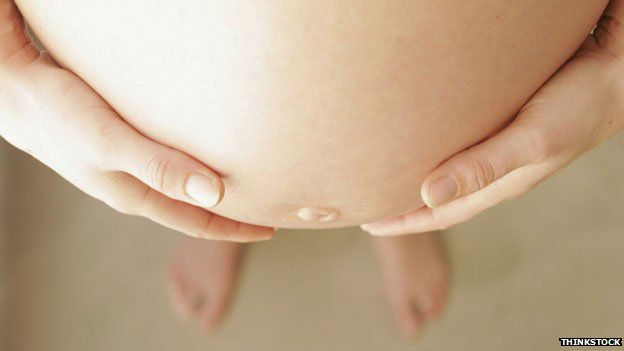How the West is cutting teen pregnancy
- Published

Teenage pregnancy is a problem developed Western nations have been battling for decades - and though it sometimes goes unnoticed they have made huge progress.
"Here's a story of utter irresponsibility: About one-third of American girls become pregnant as teenagers," wrote columnist Nicholas Kristof in the New York Times recently.
It seems like a shockingly high number. And eight years ago it was accurate.
In 2006, this was the cumulative risk of a teenager becoming pregnant once between the ages of 13 and 19. It was calculated by the National Campaign to Prevent Teen and Unplanned Pregnancy, a non-profit organisation, using data for births and abortions and an estimate for the number of miscarriages.
But when the same formula is used with the most recent figures, from 2010, it indicates that the number of teenage American girls becoming pregnant is now less than one in four, a reduction on track with changes over the past two decades.
Bill Albert, chief programme officer for the National Campaign, says teen pregnancy and birth rates have been declining in the US "almost without interruptions" for nearly 20 years, after peaking in the early 1990s.
They are down among all racial and ethnic groups in all 50 states.
He describes it as "truly one of the US's great success stories over the past two decades".
Indeed, the preliminary data for teen birth rates in 2013 suggests there has been another 22% drop in the rate of 15-to-19-year-olds giving birth since 2010.
Although abortion data is not yet available, Albert thinks it is highly likely that the rate of teenage pregnancy has declined from its 2010 level. It could be that less than a fifth of American teenage girls are now getting pregnant once.
"We do know that three things are happening in the US - the teen pregnancy rate is going down, the teen abortion rate is going down and the teen birth rate is going down," Albert says.
Why is this?
"Teen pregnancy drops in one of two ways - either teens are having less sex overall or the teens who are sexually active are using contraceptives and using them better," says Heather Boonstra from the Guttmacher Institute, a non-governmental organisation which researches sexual and reproductive health.
"What we have found looking back at just these two behaviours, is that overwhelmingly it is due to better contraceptive use."
The reasons why people are using contraceptives better are not clear-cut, Boonstra says.
Reasons she cites include greater awareness of condoms following the aids crisis, changing norms about the age people in developed countries are getting married and having children (which lowers the planned pregnancy rate), and the internet making information more accessible.
When it comes to the influence of sex education in schools, Boonstra says that while there is evidence it has helped increase teenagers' use of contraception and lower their number of partners, it does not explain the declines in teenage pregnancy entirely.
"These declines have happened across all 50 states and here in the United States different states and different school districts have different policies about their sex education programmes, and so programmes are important but there's a lot more that's going on here because otherwise we would have seen variations across the nation," she says.
There has been conflicting research about whether reality TV programmes such as MTV's "16 and Pregnant" help prevent teenage pregnancy or glamorise it.
Despite teenage pregnancy in the US being at historic lows, it's still the case that a much higher proportion of US teenagers have babies than their counterparts in other countries in Western Europe - as Kristof points out.
Both Boonstra and Albert say there are various reasons for the higher US teenage birth rate, including less access to contraception, the US's racial and ethnic makeup, norms around the best times to start a family and the prevalence of abstinence-only sex education programmes in the US.
The reduction in the numbers of teenagers having children isn't just restricted to the US, says Prof Roger Ingham from the University of Southampton.
"In most of the countries in Western Europe, the rates have been going down steadily over the last few years," he says. The teenage pregnancy rate in the UK is the highest in Western Europe, which may explain why it has been faster in the UK than elsewhere.
Ingham, who advised the UK government for 12 years on its strategy to reduce teen pregnancy, says the declines are not due to teenagers having less sex. As in the US, the improvement appears to be related to more widespread use of contraceptives, which Ingham says is due to better sex education in schools.
In terms of abortion impacting the birth rate, he says there is a mixed picture in the countries where there is good data.
The Netherlands has a low teenage abortion rate and a low conception rate, Ingham says, while Sweden has a similar birth rate but a higher conception rate - in other words, a higher proportion of pregnancies end in termination.
In the UK, the birth rate has gone down more quickly than the conception rate, as a higher proportion of those who are pregnant are choosing to have an abortion than in previous years.
Listen to More or Less on BBC Radio 4 and the World Service, or download the free podcast
Subscribe to the BBC News Magazine's email newsletter to get articles sent to your inbox